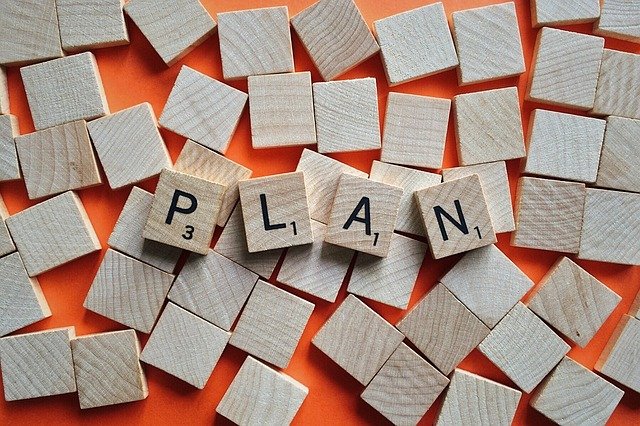Introduction
Developing a 20 year life plan is one of the most powerful actions you can take to focus your energies in your personal and business lives.
The key to business success is developing a business that meshes with your personal goals and ambitions and that meets with your personal values. Failure to align your personal and business activities with your goals and values is the major cause of stress in most business people.
Developing a 20 year life plan is a simple and effective way to start this process. It is easy to do and we have developed a simple model and format to help you complete this essential task.
Make sure you take time to review your 20 year plan at least once per year as we all know that as we grow and develop some of our plans and objectives will change as well. I have found that our 20 year goals have changed little in the time we have been life planning, but that the shorter term goals have changed.
Remember that you are most likely to over-estimate what you can accomplish in 1 year but will severely under-estimate what you will achieve in 10 years!
How to Build Your Plan
Developing a 20 year life plan is relatively easy. We have broken it down into a simple process. Find some time (allow an hour) and complete the plan. It is quicker than you think to do your own plan.
We want you to start at 20 years and work backwards through 10 years to 5 years and finally 1 year. At each stage, answer the 4 questions below with reference to your previous answers. For example: At 10 years and the “What will I own?” question – ask yourself if we are to achieve the assets owned in our 20 year Vision, what will need to own by 10 years?.
At each stage in the planning process, we want you to answer 4 key questions:
“At this stage in your life:
- What will you BE?
- What will you have ACCOMPLISHED?
- What will you be DOING?
- What will you OWN?”
These are the suggested headings for each stage, but don’t feel that you are restricted to these headings. Add additional headings as required.
Remember: there is no right or wrong way to answer these questions. You can interpret the questions in a way that makes sense to you. We have provided some guidelines for those who may need more information.
What will you BE?
Think through the various roles you will have in your life at this stage. What are they? Father, mother, grand-parent, sibling, scholar, friend, mentor, etc. Think carefully about the roles that you would like to have and why. Write them down.
What will you have ACCOMPLISHED?
At this stage, what will you have accomplished? What achievements will you be proud of? List them.
What will you be DOING?
This is different to the roles you have outlined in “What will you be?” but maybe supportive of those roles. What activities will you be involved in? business, travel, family holidays, community work, etc. List them.
What will you OWN?
What assets will you have? What will your debt structure look like? Be as specific as you feel you can. Where possible put $ amounts next to asset items. List the major asset groups eg. houses, cars, “big toys”, investments, business assets, savings, etc.
8 Steps to your 20 Year Plan
Step #1: Where will you be in 20 Years?
Begin by developing a Mindmap (or by making a list) of the 4 headings. Expand on each question and add as much detail as you require to give a complete picture of 20 years. Then move to the next Step.
Step #2: Where do we need to be in 10 years?
As discussed above, answer the questions by thinking about your 20 year plan. If you are to achieve your 20 year goals, what do you need to have achieved in 10 years. Make a separate mindmap (or list) for 10 years the move to the next step.
Step #3: Where do we need to be in 5 years?
As for 10 years, develop a separate mindmap or list for where you need to be in 5 years.
Step #4: What will things look like in 1 year?
With respect to your 5 year plan, answer the questions for 1 year out. Complete a separate mindmap or list.
Step #5: Where are we NOW?
Complete the 4 questions to get a good picture of where you are now. Make a separate mindmap or list.
Step #6: Compare and consolidate your Plans
We recommend that you compare your plan with others that it may influence eg. your spouse or life partner. We recommend that you start at 20 years and each participant completes their own Vision for 20 years. Then compare your 20 year plans and develop a composite view. This will usually entail some discussion and even compromise between the parties. Then move onto the next time period and repeat the process.
Step #7: Develop some action plans
As you have completed a picture of WHERE you want to be and where you are NOW, you are able to develop some actions plans – The HOW.
Start with HOW you will move from NOW to your Year 1 Plan. What strategies will you need to implement? What actions will you need to take? Select the 3 most important Strategies and enter into the Table below. Break each Strategy down into the 5 key actions that will progress it towards your goal. Allocate responsibilities and timeframes to each action. Use the table below to record your action plan.
If you are unsure of exactly of how to develop an action plan we suggest that you forcefield the issues.
Once you have completed your 1 Year Plan, schedule times to work on your plan and monitor your progress on a regular basis. You can also begin to work towards developing your actions to move you towards your 5 Year Goals.
Step #8: Review the Plan
Allocate time in your schedule or make a note to review your 20 Year Plan in 12 months time. Start from the beginning and review your 20 Year goals and see that they are still in line with where you want to be. Then simply work your way back. It is best to review your plan with your spouse or partner to ensure that your plans are not diverging and to reach a consensus on where you would like your life to be.
| Strategy | Actions | Who ? | When ? |
| Strategy # 1. | 1. 2. 3. 4. 5. |
||
| Strategy # 2. | 1. 2. 3. 4. 5. |
||
| Strategy # 3. | 1. 2. 3. 4. 5 |
Setting goals and planning your future is a critical element of business success. If you don’t know where you are heading personally then it is unlikely that your business will help you to get there. Do the plan – revise it regularly and work towards your goals.



